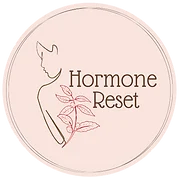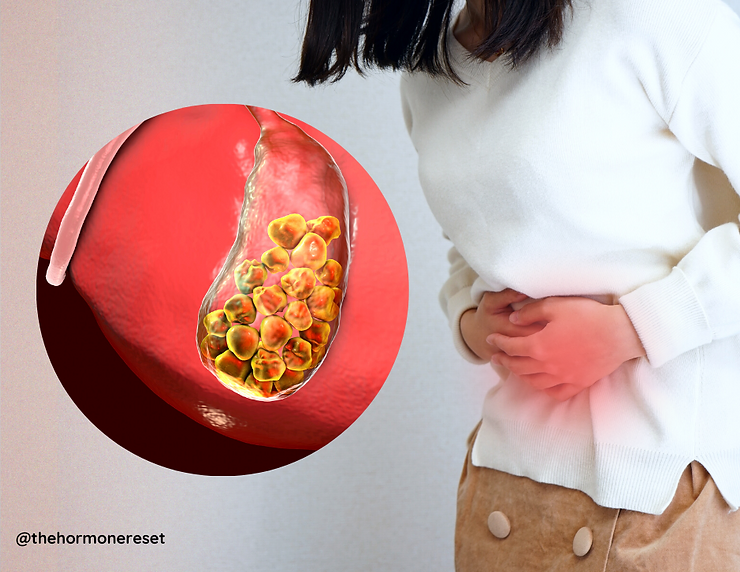Gallstones have become a ubiquitous problem with estimates suggesting up to 20-25% of various populations having the condition. Though initially relatively asymptomatic, when allowed to worsen and maybe get infected, it can become an excruciatingly painful and serious problem. Most patients are offered a relatively simple solution – cholecystectomy: surgical gallbladder removal!
As we will understand in this blog, this approach is like shooting the victim of a crime while the criminal goes scot-free!
The primary reasons leading to gallstone formation are hepatic-biliary congestion, excessive and the wrong type of cholesterol in the liver, poor gallbladder emptying, estrogen overload, etc. Let us understand these in detail.
- HEPATIC BILIARY CONGESTION – The most common underlying reason is what is referred to as hepatic-biliary congestion. This can be triggered by many factors, the simplest being chronic dehydration. Due to insufficient hydration, the bile becomes thick and sticky. As a result, the fats and other salts in the bile tend to precipitate out and form stones.
- CHOLESTEROL – Due to an imbalance in diet, the amount of cholesterol in bile increases, making it thick and sluggish. As bile becomes thick cholesterol gets supersaturated and precipitates out in the form of soft stones of different sizes (Over 80% of gallstones are made of cholesterol). Some of these can get lodged in the gallbladder. Over a period of time as more cholesterol precipitates, these stones grow bigger and can get infected leading to the telltale symptoms of gallbladder disease – severe pain and inflammation.
- LOW-FIBRE DIET – The low fibre content in diet also contributes to this process. Dietary fibre plays an important role in the excretion of excess cholesterol from the system. Typical modern diets are very low in fibre leading to higher cholesterol levels which contribute to gallstone formation.
- INCREASED NUCLEATION – Increased nucleation of cholesterol particles also plays a role in the gallstone formation process. These diets low in fibre and fats and high in refined carbs may also have a role in this process. The cholesterol particles thus created are sticky and dense, much more likely to stick together to form stones.
- ESTROGENS – Higher levels of estrogen in the body also contribute to the process of gallstone formation. Estrogen induces an increased input to the free cholesterol pool in the liver by up-regulating the low-density lipoprotein (LDL) receptor. This increased cholesterol in the liver then tends to precipitate out in the form of stones. This is one reason why women are much more likely than men to suffer from gallstones.
- GALLBLADDER HYPOMOTILITY – Poor emptying of the gallbladder is another important reason contributing to gallstone formation. When the gall bladder does not empty completely, bile tends to stagnate in the bladder increasing the chances of formation of sludge and stones. The most common reason for this is a diet that is low in fats and high in refined carbohydrates (LCHF). Unfortunately, this is a very typical diet recommended by health authorities in various countries!
Gall bladder empties itself in response to fat in the diet. When we consume a diet low in fats, the bladder does not empty fully leading to bile stagnation. Stagnating bile is an obvious trigger for stone formation!
For most people, there is usually a combination of the above factors that lead to the formation of gallstones.
HOW TO PREVENT GALLSTONES?

The good news is that almost all the reasons leading to gallstone formation are modifiable i.e. we can choose a lifestyle that prevents gallstone formation. Let us look at the various changes we can make to reduce the possibility of getting gallstones as well as getting rid of them if we already have them.
- HYDRATION – Proper hydration is a fundamental requirement that ensures the bile is thin and free-flowing.
- DIETARY CHANGES – Dietary changes are perhaps the most important factor that we can easily influence in our favour.
- A diet based on unrefined wholegrains and lots of vegetables and fruits helps reduce the likelihood of bile fats precipitating out as stones.
- Consuming a good amount of healthy fats in the diet ensures that the bile is used up for digesting the fats. This ensures that the bile does not stagnate in the bladder thereby reducing the chances of stone formation.
- The increased fibre content in the diet helps in reducing the cholesterol load in the body hence reducing stone formation chances
- GALLBLADDER MOTILITY – Ensuring good gallbladder motility is another important step toward reducing the likelihood of gallstone formation. Better motility helps the bladder empty itself completely so that bile does not sediment and solidify. Bitter herbs are useful in improving gallbladder motility.
- ESTROGEN – Estrogen dominance is one key reason for excess cholesterol leading to fat precipitation in the form of stones. Hence ensuring estrogen levels are balanced is key to preventing gallstone formation. One of the reasons for excess estrogen is xenoestrogen – i.e. estrogen-like substances coming into the body from outside. Reducing estrogen overload and minimising the influx of xenoestrogens is important to reduce the chances of gallstone formation. Ensuring optimal liver function and bowel movements is important in reducing estrogen dominance.
- CHOLESTEROL – High levels of cholesterol – especially the dense and sticky particles of cholesterol tend to stick to each other and speed up the process of stone formation. Implementing the required dietary and lifestyle changes to improve the lipid profile is key to reducing stone formation likelihood.
A NOTE ON CHOLECYSTECTOMY – As I mentioned earlier, removing the gallbladder is like shooting the victim of a crime while the criminal is allowed to go scot-free. This approach completely ignores the root causes of the problem while focusing only on the symptoms. As the reasons remain unaddressed, the formation of stones continues even after the removal of the gallbladder leading to many issues in the future.
On the other hand, the removal of the gallbladder leads to very poor digestion of fats creating long-term metabolic deficiencies in the body. One common outcome is deficiencies of fat-soluble vitamins like Vitamin A, D, E and K. In turn these deficiencies lead to the development of various chronic ailments in the long term.
DISSOLVING EXISTING STONES
The various points mentioned above can help one reduce the chances of getting gallstones as well as reduce the likelihood of recurrence for those who have had stones in the past.
However, when it comes to existing stones, conventionally it is considered impossible to reduce or dissolve them. There is a large volume of scientific research and clinical studies have highlighted various protocols that can help dissolve or flush out existing stones.
In the Hormone Reset Program, improving hepato-biliary health is one of our key focus areas.
Get in touch with us if you need help with liver and gallbladder-related issues.

References
- VAN ERPECUM, K. J., & VAN BERGE-HENEGOUWEN, G. P. (1999, March 1). Gallstones: an intestinal disease? Gut, 44(3), 435–438. https://doi.org/10.1136/gut.44.3.435
- Di Ciaula, A., Molina-Molina, E., Bonfrate, L., Wang, D. Q., Dumitrascu, D. L., & Portincasa, P. (2019). Gastrointestinal defects in gallstone and cholecystectomized patients. European journal of clinical investigation, 49(3), e13066. https://doi.org/10.1111/eci.13066
- Igimi, H., Tamura, R., Toraishi, K., Yamamoto, F., Kataoka, A., Ikejiri, Y., Hisatsugu, T., & Shimura, H. (1991). Medical dissolution of gallstones. Clinical experience of d-limonene as a simple, safe, and effective solvent. Digestive diseases and sciences, 36(2), 200–208. https://doi.org/10.1007/BF01300757
- Di Ciaula, A., Molina-Molina, E., Bonfrate, L., Wang, D. Q., Dumitrascu, D. L., & Portincasa, P. (2019). Gastrointestinal defects in gallstone and cholecystectomized patients. European journal of clinical investigation, 49(3), e13066. https://doi.org/10.1111/eci.13066
Share


Leave a Reply